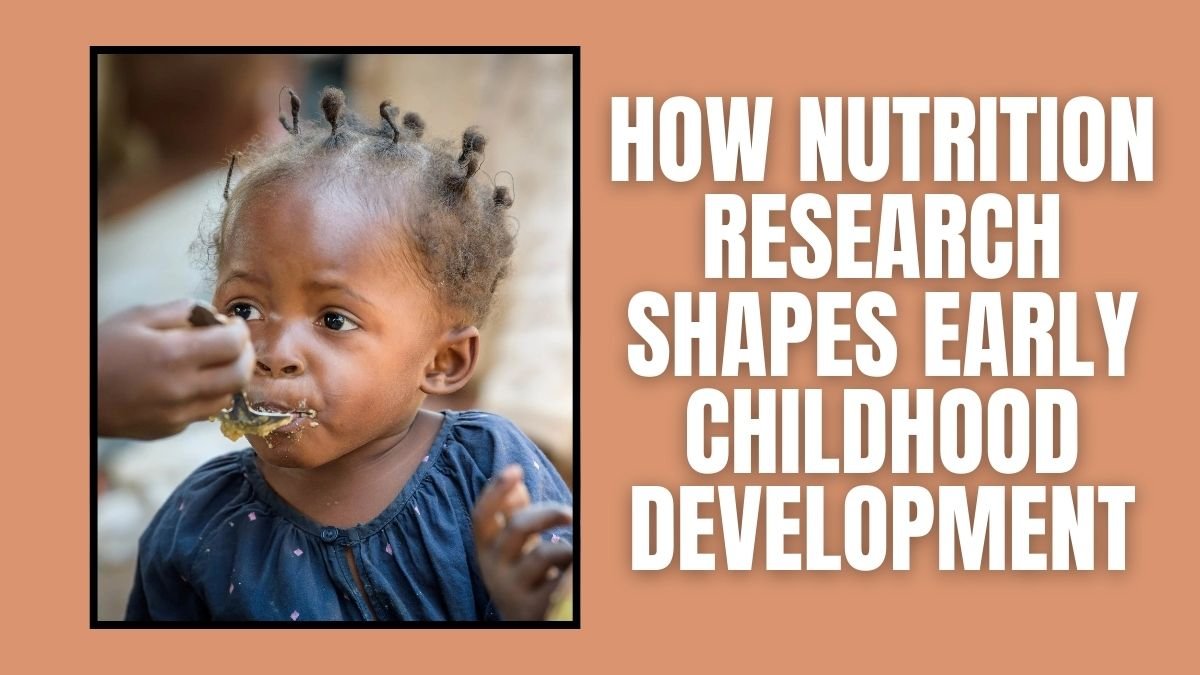Nutrition Research: When we build a tall building, its strength depends on how strong its foundation is. In human life, this foundation is childhood. The first five years after birth are not just the time to grow and learn to speak, but they are the period when the foundation of the brain, body and personality is laid. Providing the right nutrition during this period is as important as providing timely water and fertilizer to a plant.
Nutrition does not mean just filling the stomach but giving the body and brain all the essential elements they need to grow and function. Nutritional research in recent years has deepened the understanding that a child’s growth, learning ability and health are directly linked to the quality of his diet.
Early childhood: Golden window of opportunity
There is a term much discussed in nutrition science—the first 1,000 days. This period is from conception to the child’s second birthday. During this period, the structure of the brain and body is formed so rapidly that the effect of any deficiency can last for a long time.
For example, a lack of nutrition in the womb can lead to a child being born with low weight, and later on he may have problems like learning difficulties, weak immunity and stunted growth. On the other hand, if proper nutrition and care are provided during this time, it can provide better health and ability to the child throughout his life.
Rapid development of the brain and the role of nutrition
Research shows that a child’s brain is only 25% of its full size at birth, but by the age of five it develops to about 90%. This development does not happen only with time but with the right nutrition.
- Omega-3 fatty acid (DHA): It plays an important role in the formation and function of brain cells. Fish, flax seeds and walnuts are good sources of it.
- Iron: Helps in delivering oxygen to the brain and producing neurotransmitters.
- Zinc and iodine: Helpful in increasing learning and memory capacity.
- Vitamin B group: Necessary for the proper functioning of the nervous system.
If there is a deficiency of these nutrients, then the child’s ability to learn, ability to concentrate and intellectual development can be deeply affected.
Long-term consequences of malnutrition
Malnutrition is not just a physical problem, but it can affect the entire future of the child. Its effects are seen at many levels:
- Stunting—The child lags behind in height and weight according to his age.
- Weak immunity—the risk of diseases and infections increases.
- Lack of cognitive development—poor performance in studies and difficulty in learning.
- Emotional and social impact—lack of confidence and hindrance in social development.
According to the World Health Organization, about 140 million children under the age of five in the world are still victims of stunting, and a major reason for this is lack of nutrition.
Nutrition begins from pregnancy.
The foundation of a healthy child is laid in his mother’s womb. The diet of a pregnant woman directly affects the development of the child.
- Folic acid: Necessary for proper development of the baby’s brain and spinal cord.
- Calcium: Helpful in building bones and teeth.
- Iron: Essential for preventing anemia and supplying oxygen.
- Protein: Necessary for the development of the baby’s cells and tissues.
If there is a nutritional deficiency during pregnancy, its effects can continue even after birth.
Importance of breastfeeding and early diet
For the first six months of life, exclusive breastfeeding is the best diet for the baby. Breast milk contains all the nutrients that are perfectly balanced according to the baby’s needs. It also contains antibodies that protect the baby from infections.
After six months, the baby needs complementary food. At this time, he should be given semi-solid, nutritious and varied food—like dal ka pani, vegetable puree, and fruit mash—and gradually normal home-cooked food.
Balanced diet: Nutrition in every meal
A balanced diet should have these four main components:
- Carbohydrates—the main source of energy (cereals, potatoes, rice).
- Proteins—for repair and building of muscles and tissues (pulses, eggs, fish).
- Fats—for brain and nervous system development (ghee, nuts, oils).
- Vitamins and minerals—for strengthening the immune system (fruits, vegetables).
Research also shows that children’s diets should have a variety of colors, as different colored fruits and vegetables provide different nutrients.
Latest research and innovations
Today, nutrition research is not just limited to traditional foods.
- Biofortification: growing crops in a way that they naturally contain more nutrients, like iron-rich millets.
- Fortified foods: adding vitamins and minerals to flour, milk, oil, etc.
- Probiotics and prebiotics: improving nutrient absorption by improving gut health.
- Personalized Nutrition: Specialized diet plan according to the health and needs of each child.
Social and economic aspects
Nutrition is not only a personal responsibility but also a social and economic issue.
- Poverty may limit access to nutritious food.
- Lack of education prevents parents from providing a balanced diet to children.
- Lack of clean water and sanitation also affects nutrition.
Therefore, to improve nutrition, it is necessary to improve not only diet but also social conditions.
Government and global initiatives
In India, Poshan Abhiyaan, the Mid-Day Meal Scheme and Anganwadi Kendra are some of the initiatives that are being implemented. Programs like the Centre are working to reduce malnutrition in children.
Globally, organizations like UNICEF, WHO and FAO are also active in improving early childhood nutrition.
Conclusion: Nutrition today, future tomorrow
Early childhood nutrition determines the course of a child’s entire life. By providing the right diet at the right time, we can change the future of not just a child but the entire society. Nutrition research teaches us that this is possible with science, awareness and collective effort.
